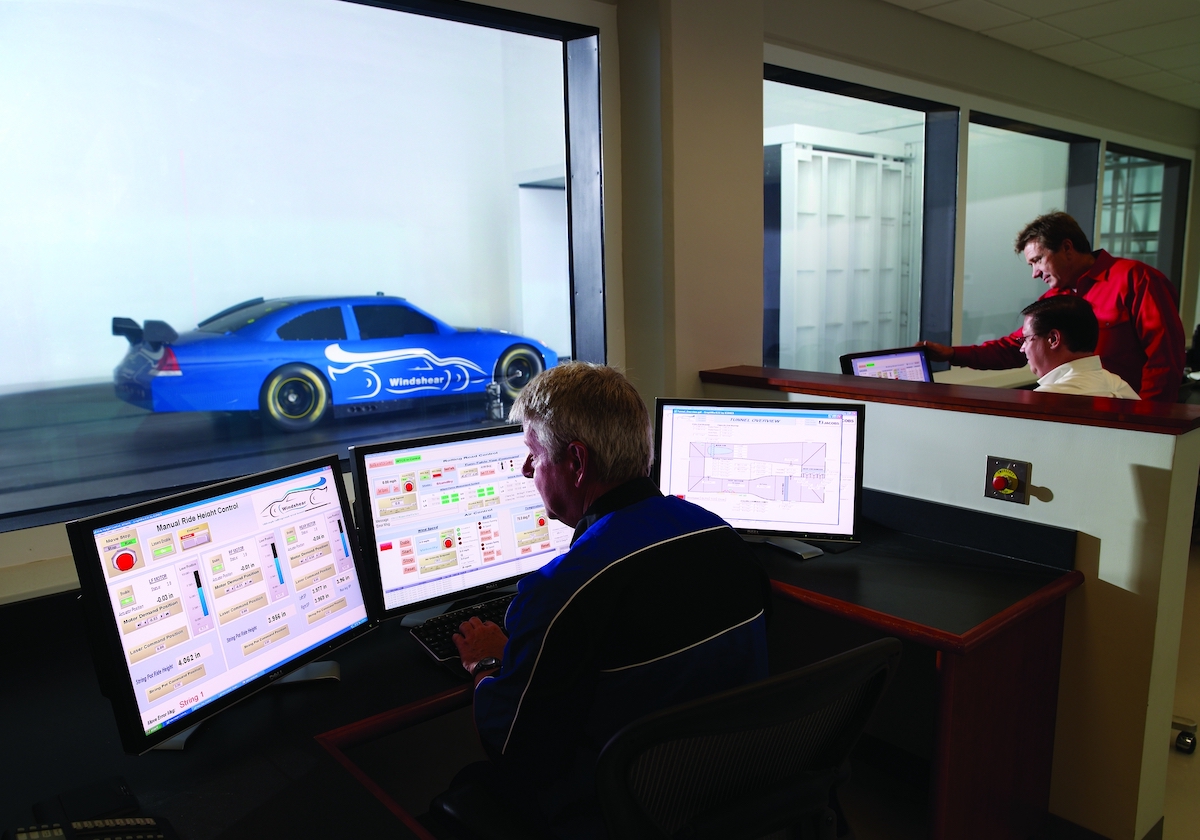

More details of the crucial and historic Supercars Gen3 wind tunnel tests in America have emerged, including staffing and the confirmed dates.
It’s now confirmed that the DJR Ford Mustang and Triple Eight Chevrolet Camaro flown to the USA will undergo extensive aero mapping at the Windshear wind tunnel in Mooresville, North Carolina, from December 8-10.
Using a full-scale, rolling road wind tunnel is a first for Supercars, after years of measuring downforce/air drag with limited-speed coast-down tests on airfield runways.
The traditional VCAT aero test results were found wanting for the Mustang from the start of the season.
Also revealed is that the other piece of the parity puzzle, transient dyno engine testing, will start in the States because conversion of the proposed AVL facility in Melbourne has been delayed.
Together, the expensive offshore aero and engine measurements are aimed at ending parity arguments before the start of the 2024 season.
The wind tunnel tests will be overseen by Supercars supremo Shane Howard and incoming new General Manager of Motorsport Tim Edwards, replacing benched technical boss Adrian Burgess.
Supercars support technical staff and homologation team engineers will start heading to the States from Tuesday through the rest of the week to prepare for the intensive wind tunnel test program.
Speedcafe understands that Supercars has gained up to 12 hours running a day at Windshear, which is in constant demand and use by NASCAR and IndyCar teams.
An extra two days the following week after December 8-10 are available if required.
All teams on both sides of the Ford/GM divide are relying on the wind tunnel tests to end Gen3 aerodynamic discrepancies before the start of next season.
In the latest Speedcafe Newscast podcast, Ford Australia’s motorsport manager Ben Nightingale, DJR boss David Noble and WAU co-owner Ryan Walkinshaw talk about the high expectations for the wind tunnel tests to end any aero parity debate.
Attendance at the Windshear tests is limited to four team representatives at any one time, but they can be rotated.
Engineers based at the nearby Ford Performance and GM Performance racing tech centres will receive data downloads for analysis at the end of each day’s wind tunnel running.
The Gen3 Camaro will be used as the baseline for downforce and air drag measurements.
The Mustang will be adjusted accordingly to match the Camaro’s figures, using a variety of aero trimming body parts developed by DJR during the parity trigger process.
The idea is to bring the Mustang up to the Camaro’s overall aerodynamic performance rather than pull the Chev back.
The DJR and Triple Eight engineering teams at the wind tunnel test will be headed by Perry Kapper and Jeromy Moore, the respective homologation engineering chiefs.
Ford Australia will be represented by in-house engineer Brendan McGinniskin.
It’s understood Chevrolet Racing Australia will match Ford’s presence with Mooresville-based GM Performance engineers.
Meanwhile, the other parity sore point – engine performance equality – will initially be addressed by transient dyno tests in the USA.
Ford and its teams still maintain the Camaro’s GM 5.7-litre pushrod LTR V8 has power delivery advantages over the 5.4-litre quad cam Coyote-based powerplant.
More engine spec tweaking is scheduled, but the AVL transient dynamometer in Melbourne – not designed for race engine simulations – needs a costly upgrade that has been delayed once again.
Speedcafe’s latest information is that local engine parity testing will happen until well into early next year, with the interim American comparison providing the foundation engine data for next year.




















Discussion about this post